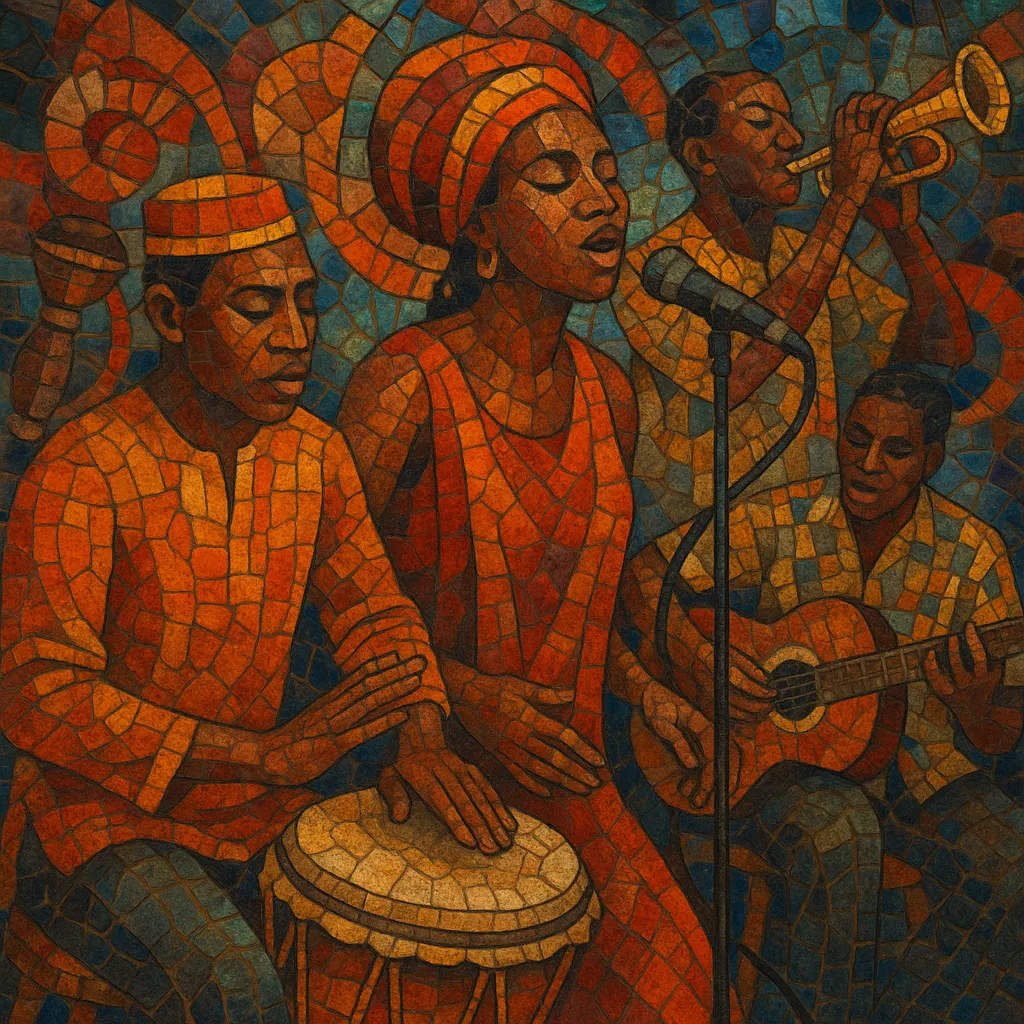Mbalax is a popular dance music from Senegal that fuses traditional Wolof sabar percussion and tassu (praise-chant) with Afro‑Cuban and Western pop idioms.
It is defined by fiercely syncopated, polyrhythmic drum patterns, bright electric guitars, punchy horns, and emotive vocals, most often sung in Wolof.
The style foregrounds live percussion, especially the sabar drum family and the tama (talking drum), and uses sudden, cued breaks called bak that drive dancers into energetic responses.
Mbalax crystallized in Dakar as young bands who were playing Afro‑Cuban dance music in clubs began to re-center Wolof sabar rhythms and tassu within modern electric band formats. Musicians and dancers brought the sabar ceremony’s kinetic energy indoors, and the new sound took shape around tightly cued rhythmic breaks (bak) led by master drummers.
After the Star Band de Dakar splintered, Étoile de Dakar—featuring a young Youssou N'Dour—gave mbalax its defining sound: sabar and tama at the forefront, brisk tempos, call‑and‑response vocals, and horn stabs. By the mid‑1980s, mbalax was Senegal’s dominant urban dance music, embraced at clubs, neighborhood events, and national celebrations.
Youssou N'Dour’s Super Étoile refined the style on world stages, blending its percussion‑driven engine with pop, rock, and soul production. Albums and tours popularized mbalax globally, while home audiences kept favoring percussion‑heavy arrangements. Collaborations and crossover hits helped place mbalax within the broader category often marketed as worldbeat.
A new generation—artists such as Alioune Mbaye Nder, Pape Diouf, Wally Seck, and Viviane Chidid—modernized mbalax with sleeker production, synths, and influences from R&B, Afrobeats, and zouk. The core remains the sabar groove and the bak break, and the music still functions as an engine for dance, social commentary, and communal celebration in Senegal and its diaspora.
Start with a fast, danceable pulse—typically 120–150 BPM—and build around interlocking sabar drum patterns. Use a small sabar ensemble (with nder/lead drum, mbëng-mbëng, tungune) plus tama (talking drum) to create dense, syncopated polyrhythms. Insert frequent, clearly cued bak breaks where the band drops out or hits accent figures to ignite the dance floor.
Layer live percussion with a trap drum kit for punch, add percussive electric bass that anticipates downbeats, and use bright, lightly overdriven rhythm guitars playing tight, palm‑muted figures. Include keyboards for comping and brass or synth‑brass for short riffs and call‑and‑response stabs. Arrange verses and refrains around a repeating groove, then punctuate sections with bak cues (whistle or stick clicks) and short percussion solos.
Write melodies in a modal or pentatonic/Mixolydian flavor and keep harmonies relatively simple (I–IV–V progressions with occasional borrowed chords). Feature expressive lead vocals in Wolof (or a mix with French/English), with backing responses from the chorus. Integrate tassu—rhythmic spoken or chanted lines by a griot-style vocalist—over percussion breaks.
Focus lyrics on social issues, community pride, spirituality, love, and everyday life. Keep the groove percussion‑forward in the mix, with crisp transients on sabar and tama. On stage, coordinate dancers and percussion cues so that visual choreography matches bak accents, preserving the inseparable link between the music and the sabar dance.


